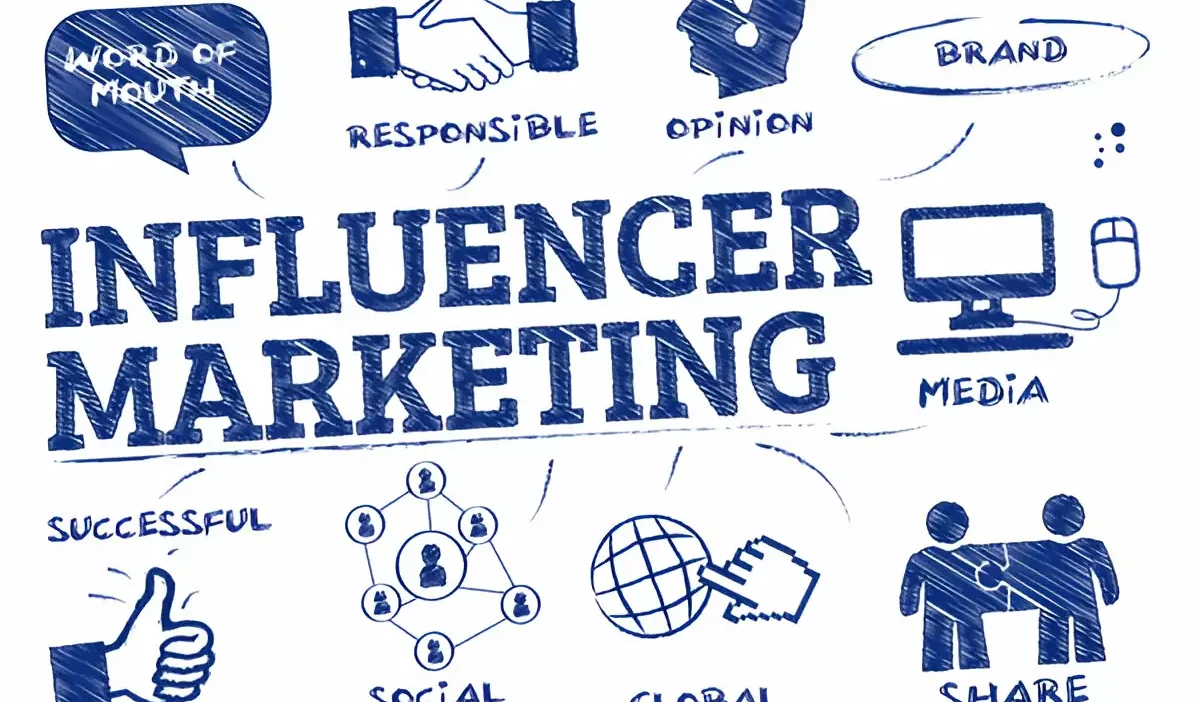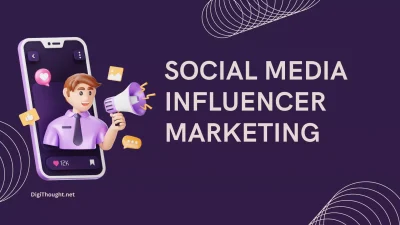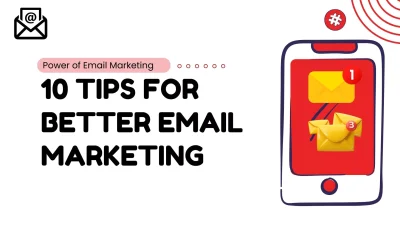Influencer marketing is now one of the most powerful tools in modern digital marketing. Whether you’re launching a new product or extending your brand’s reach, influencers can help you connect with your target audience in an engaging and authentic way.
But success in influencer marketing doesn’t occur by accident; rather, it requires a well-thought-out strategy.
If you’ve been wondering what goes into creating an influencer marketing strategy, this guide will take you step by step through every parameter–from setting the goals to finding ideal influencers, as well as measuring results.
Understanding Influencer Marketing
Before you get into strategy, it is important to know what influencer marketing is and why it works. Essentially, this is where someone with lots of social influence amongst a defined audience (i.e. an influencer), starts partnering to produce genuine content that features the benefits of your brand, product or service. This allows you to obtain their audience’s trust and loyalty.
The numbers speak to its success. A report from Influencer Marketing Hub found that businesses make an average of $5.20 for every $1 spent on influencer marketing. If it’s done right, it’s a win-win situation for both brands and influencers.
Benefits of an Influencer Marketing Strategy
Why is strategy so important? A good influencer marketing strategy will allow you to:
- Target Niche Audiences
Work with influencers whose audience matches your target market. - Increase Brand Awareness
Tap into the influencer’s credibility and reach to boost your brand’s visibility. - Spark Engagement
Encourage conversations around your product or service on a scale that traditional advertising cannot. - Increase Conversions
Influencers drive action, which makes them a crucial factor in boosting sales and leads.
Define Your Objectives
Influencer marketing is no exception: every successful marketing campaign begins with a set of clear goals. What do you mean to have happen? Is it to increase sales?
- Drive traffic?
- Introduce new products for the business or enterprise at hand
- Get more leads or close deals
This is called a time frame of some kind, and you should always make sure the goals are Specific, Measurable, Achievable, Relevant, Time-bound and with a guarantee. Say we say our goal is to raise Instagram engagement by 20% in three months.
Understand Your Audience
Who you understand your audience to be will, in the final analysis, decide the success of your campaigns. Spend time researching your target audiences and think about:
- Demographics such as age, gender, income levels and location
- Interests, philosophies (Spiritual or whatever else they may be)
- Preferred social media platforms to get their information in front of them as often as possible
- Pain points that your product solves for them
This will help to identify which influencers appeal to the same group and have credibility that they do not.
Determine Your Budget
How much money do you have to engage in this type of marketing? What you can shell out will determine:
- The class and range of anybody you partner with as an influencer
- The scale of your campaign in terms of one-time posts vs multi-month partnerships
There is a very cautious word to be said here regarding pricing, because not only are nano influencers (those having fewer than 10,000 followers) cheap at $50–200 per post when larger or celebrity-type people may demand thousands or even millions for their work with one customer at that level.
Don’t forget also to allocate for additional expenditures such as:
- Content production
- Incentives (like giving away products at no cost)
- Management tools for the campaign
Select the Right Influencers
It’s key to find the right influencer. How do we manage this task? Here are some suggestions:
- Relevance: Does the influencer’s topic fit with our brand and products?
- Engagement Rate: More important than sheer number of followers is an engaged audience; look for social interactions people have made with their posts that show they are not just passively reading. This means likes plus comments and or shares.
- Authenticity: Choose influencers who have constructed trust and decency within their audience.
- Content Quality: Look at their innovation and identify if it is well coherent with your brand message.
In order to identify influencers, employ tools such as Aspire, Upfluence, or Heepsy, or even browse hashtags on social media platforms to dig out niche creators.
Map it All Out
Now that you’ve found the influencers, it’s time to take the next step: planning out your campaign. You need to decide on things like:
- Type of Content:
Is it going to be an Instagram Reel or story, a blog post, it might even be a channel on YouTube or make use of TikTok trends for updated videos. - Messaging:
Theco Your product what specific details with licensed points should influencers communicate about? - Content Guidelines:
Let the influencers have their creative freedom, provide them with brand-specific must-haves such as flagsplease (the third section has the brand name in clear view), and hashtags to use in their message.
Pro tip: Work with influencers, don’t just tell them what to do. They are the best judge of what will appeal to their audience.
Carry Out Contracts
Formalize your partnership through a clear contract. This should include:
- Deliverables (i.e. posts, videos, stories, etc.)
- Posting schedule
- Payment details
- Key campaign objectives
- Who owns the rights to your content
- Metrics to report against
This step ensures that everyone is on the same page and prevents misunderstandings later on.
Monitor and Evaluate Performance
You’re not finished when influencers press send. Regularly review your campaign’s performance. The following indicators should be kept track of:
- Engagement rates (likes, comments and shares)
- Click-throughs (using custom links and UTM codes)
- The number of sales or leads generated
- New followers or subscribers
A wide variety of platforms including Instagram Insights, TikTok’s Creator Marketplace, and tools such as Hootsuite that are independent third-party services, allow you to gather statistics on how effective your marketing efforts are. Compare these outcomes with your initial goals to assess the level of success (ROI) for each step of your campaign.
Building Long-Term Relationships
Once an influencer has given positively outstanding results, communication should continue. Moving from a one-off project to an extended collaboration brings continuity and trust with the public.
This, even more than money, is a complementary incentive. offers first access to products or exclusively available Call
Chances You Should Avoid When Working with Influencers
Even though influencer marketing offers many magnificent opportunities, there are some pitfalls that you should avoid:
- Rely only on the number of followers. Be mindful of this and take engagement and fit into account.
- Influencer content that is overly scripted leaves a point of inauthentic.
- Do not forget the transparency laws! Be sure that your influencers disclose sponsored posts (e.g., hashtaging #ad or #sponsored).
- Neglecting performance metrics means that you’re left in the dark: you can’t tell if any given campaign has been successful.
Learn from these mistakes–and you’re already ahead of the curve.
Amplify with Influencer Marketing Today
Influencer marketing is an essential tool for brands navigating the digital age. If you follow these steps to put together your influencer marketing strategy, then not only will it further brand recognition and engagement but can also give an air of authentic connection with members in your target audience.
The key here is thoughtful planning– authentic partnerships that fit both sides’ needs and goals.
You’re ready for the next step if: just start leveraging any tools that can simplify influencer partnerships, and performance tracking is underway. Now, fret about nothing but getting your strategy into high gear!



